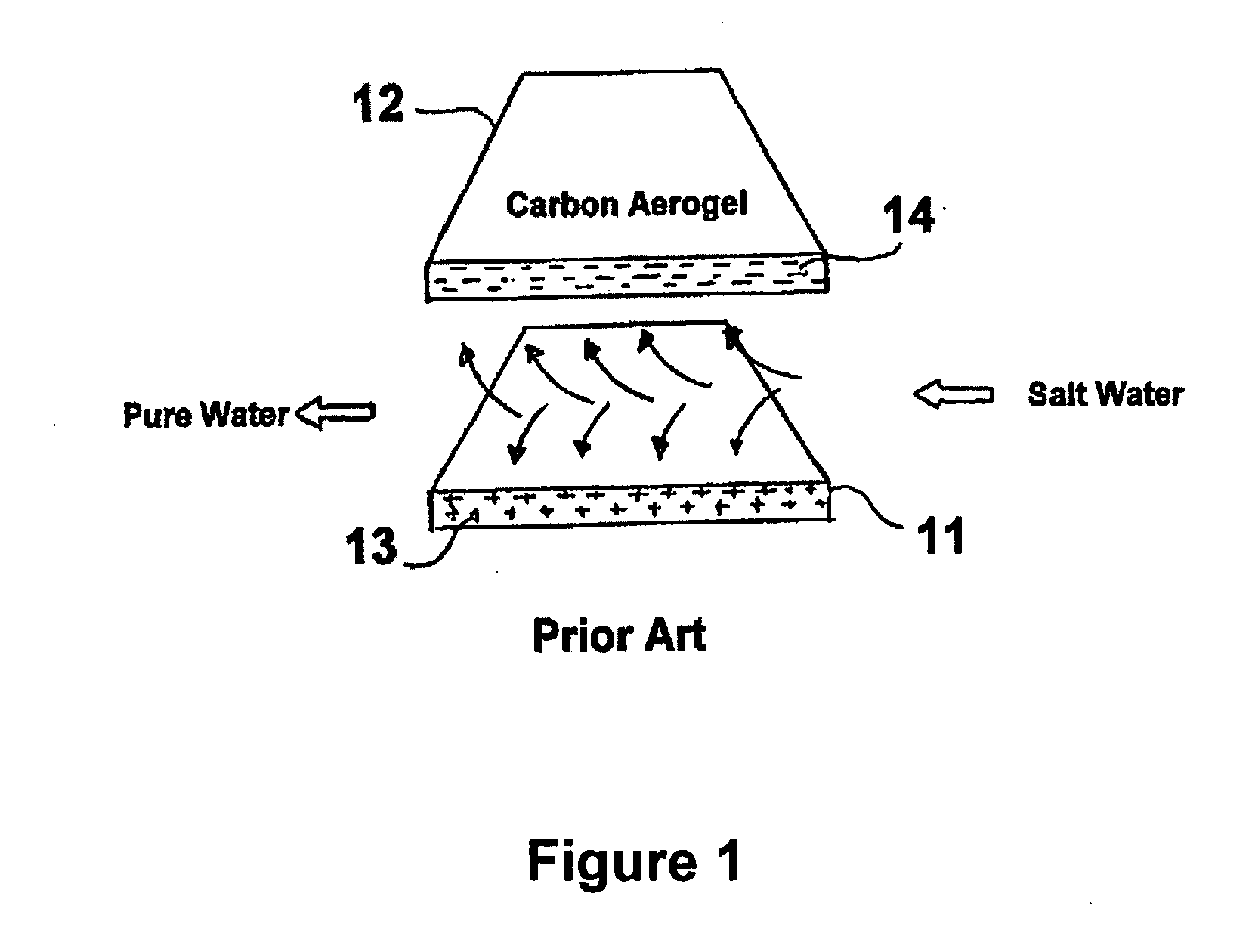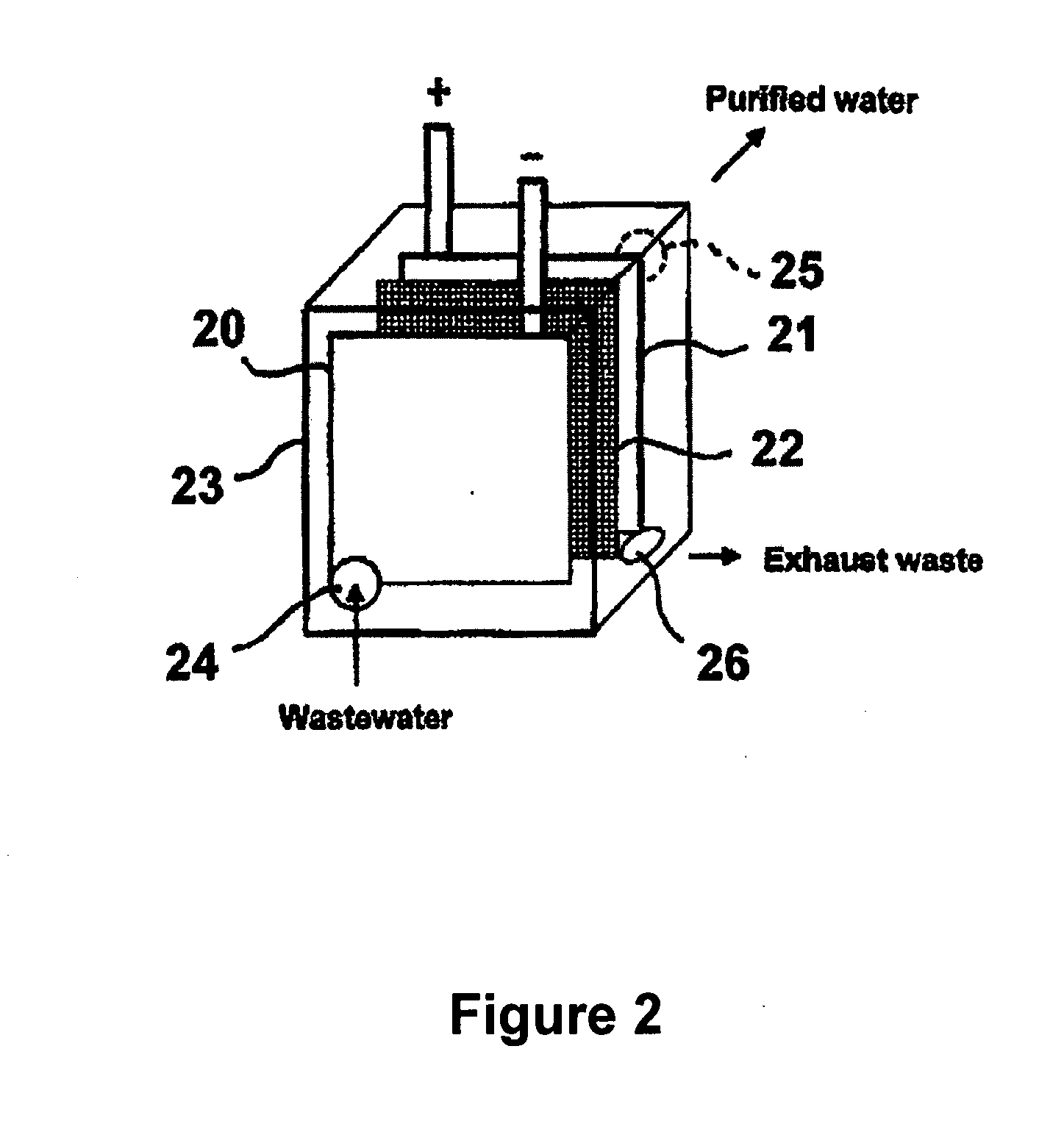Multifunctional filtration and water purification systems
a multi-functional, water purification technology, applied in the direction of machine/engine, liquid/fluent solid measurement, treatment water, etc., can solve the problems of pyrogens, bacteria, pyrogens, etc., and achieve the effect of not effectively removing particles, pyrogens or bacteria
- Summary
- Abstract
- Description
- Claims
- Application Information
AI Technical Summary
Benefits of technology
Problems solved by technology
Method used
Image
Examples
example 1
Production of Exfoliated Graphite
[0091] Exfoliated graphite was produced by mixing concentrated sulfuric acid and graphite powders. The mixture was heated in an oven at 600° to 1000° C. The resulting expanded graphite includes C═O and C—OH bonds on the graphite particles, which crosslink with poly(ethylene vinyl alcohol) and glutaraldehyde. The resulting graphite powders are stable in the porous plate and can not wash out during the wastewater treatment process.
example 2
Production of Porous Graphite Electrode
[0092] 9 grams of exfoliated graphite powders were mixed with 10 grams of water and 10 grams of 10 wt % polyvinyl alcohol), forming a first mixture. 10 grams of water were mixed with 2 grams of 50 wt % glutaraldehyde in water and 0.5 ml HCl (35 wt %), forming a second mixture. The two mixtures were mixed together thoroughly and the resulting mixture was cast to produce a 1 / 16″ thick sheet which was then heat treated at 100° C. Water boiling from the plate generated bubbles, making the plate porous. Because glutaraldehyde binds with poly(vinyl alcohol) in an irreversible fashion, the resulting cross-linked polymer was entirely insoluble, even in hot water. In some experiments, PEVA was used as a binder to increase the electrode strength. The solvent for PEVA was 1:1 volume ratio of 1-propanol and water.
[0093] Table 1 shows a comparison of surface resistance between the electrode produced in accordance with this example and other electrode mate...
example 3
Variation of Electrode Porosity by using Different Bubble Agents
[0094] Two graphite-based porous electrodes were produced using different bubble agents. 8 grams of exfoliated graphite powder and 1 gram of bubble agent (ammonium bicarbonate or sodium bicarbonate) were mixed with 10 grams of water and 10 grams of 10 wt % polyvinyl alcohol, forming a first mixture. 10 grams of water were mixed with 2 grams of 50 wt % glutaraldehyde and 1.5 ml HCl (35 wt %), forming a second mixture. The two mixtures were mixed thoroughly and the resulting mixture was cast to produce a 1 / 16 in thick sheet. The sheet was cured at room temperature. Since glutaraldehyde binds with polyvinyl alcohol in an irreversible fashion, the resulting cross-linked polymer was insoluble, even in hot water.
[0095] Electrodes produced with or without bubble agent were produced as described in Example 2 and tested in a system without applied water pressure. An electrode produced with no bubble agent had low water permeab...
PUM
| Property | Measurement | Unit |
|---|---|---|
| Diameter | aaaaa | aaaaa |
| Fraction | aaaaa | aaaaa |
| Fraction | aaaaa | aaaaa |
Abstract
Description
Claims
Application Information
 Login to View More
Login to View More - R&D
- Intellectual Property
- Life Sciences
- Materials
- Tech Scout
- Unparalleled Data Quality
- Higher Quality Content
- 60% Fewer Hallucinations
Browse by: Latest US Patents, China's latest patents, Technical Efficacy Thesaurus, Application Domain, Technology Topic, Popular Technical Reports.
© 2025 PatSnap. All rights reserved.Legal|Privacy policy|Modern Slavery Act Transparency Statement|Sitemap|About US| Contact US: help@patsnap.com



